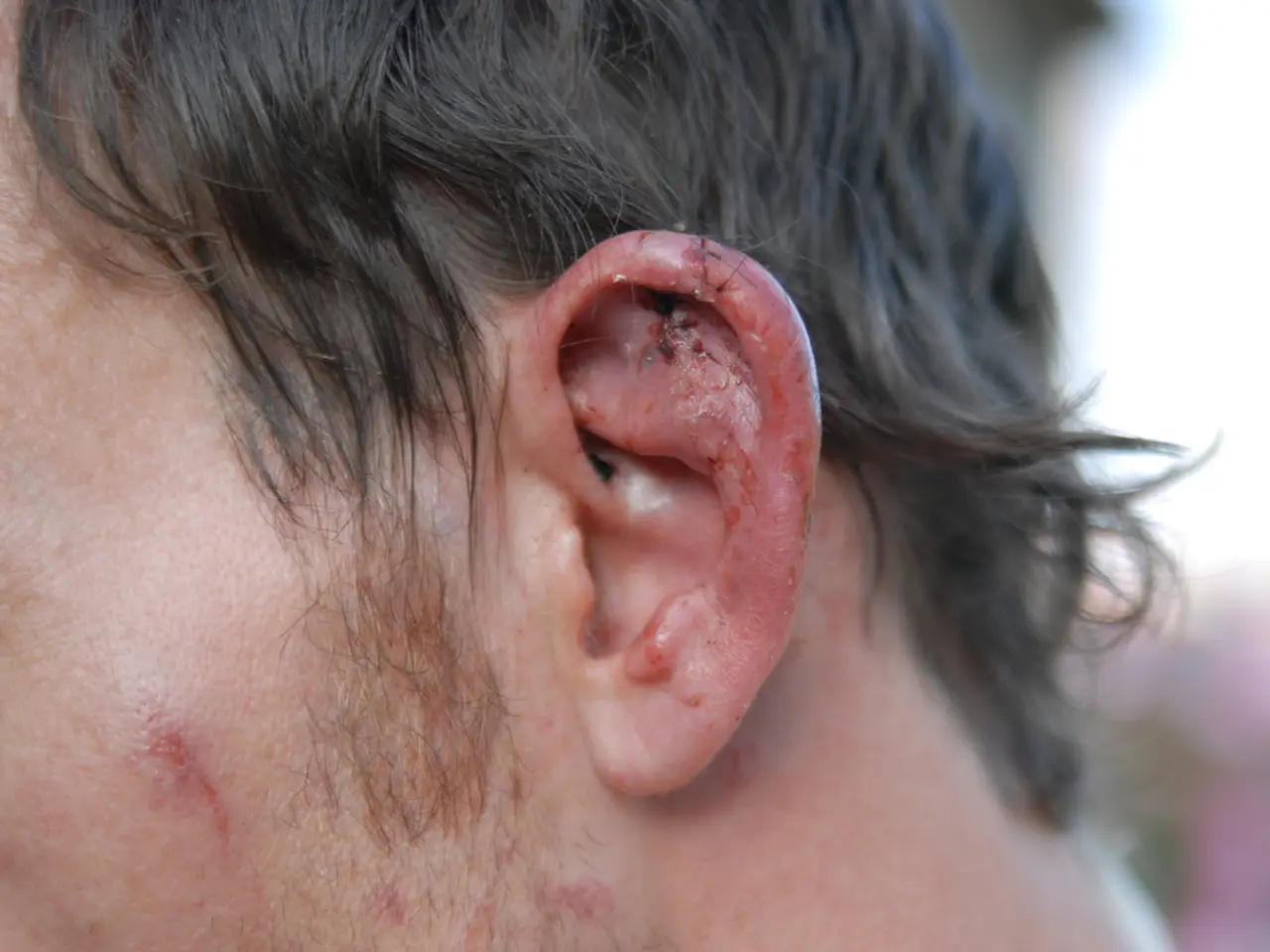Sexual climax: Definition, sensations, and additional insights
In the realm of human sexuality, the understanding of orgasms has evolved significantly over the years. Contrary to popular belief, intercourse is not the sole pathway to achieving an orgasm for all individuals. In fact, research identifies several different types of orgasms in humans, varying by physiological and psychological characteristics as well as the site of stimulation.
For males, orgasm typically involves the release of semen during an orgasm, but men can also experience orgasms without ejaculation, known as pelvic orgasms. The classic male orgasm, characterised by rhythmic contractions of the penis and expulsion of semen, is known as the ejaculatory orgasm. However, men can also experience intense orgasms through stimulation of the prostate gland, either internally via the rectum or externally via the perineum.
Women, on the other hand, can experience orgasms through stimulation of the clitoris, resulting in rhythmic muscle contractions and intense pleasure, or through stimulation inside the vagina, sometimes specifically the G-spot area. These are known as clitoral and vaginal orgasms, respectively. It's worth noting that some individuals may experience blended orgasms, which combine elements of both.
In addition to these, there are various other types of orgasms, including hands-free orgasms, nipple orgasms, and more. Hands-free orgasms, typically described by women, can occur without direct genital stimulation but through mental or other physical stimuli. Nipple orgasms, resulting from stimulation of the nipples, can also lead to orgasm for some individuals.
Orgasms can be categorised into stages such as excitement, plateau, orgasm, and resolution (Master and Johnson's model) or desire, excitement, and orgasm (Kaplan's model). This four-phase model is common to both men and women, describing the physiological response to sexual stimulation.
It's important to note that orgasms can vary greatly among individuals due to factors such as gender, personal variation, and the site of stimulation. Premature ejaculation is a common sexual complaint in males, while females may not have a recovery period and can have further orgasms with repeated stimulation.
Orgasms are more than just a peak of physical pleasure. They are associated with the release of hormones such as oxytocin and endorphins, which can improve sleep quality, regulate anxiety, and potentially reduce the risk of certain diseases.
However, it's crucial to remember that while understanding the various types of orgasms can be enlightening, it's essential to approach sexual health discussions with sensitivity and respect for individual differences. If you or someone you know is experiencing issues with orgasm, it's always advisable to seek professional help.
References: [1] Hull, S. L. (2012). Anatomy and physiology. Pearson Education. [2] Schmitt, D. P., & Buss, D. M. (2001). Sex differences in human mate preferences: Evolutionary hypotheses tested in 37 cultures. Behavioral and Brain Sciences, 24(5), 681-703. [3] Whipple, B. (2009). The G spot and other discoveries: Sexual secrets every man should know. Regan Arts. [4] Masters, W. H., & Johnson, V. E. (1966). Human sexual response. Boston, MA: Little, Brown and Company. [5] Sanders, S. (2006). The multi-orgasmic man: Sexual secrets every woman should know. Regan Books.
- In the realm of human sexuality, scientific research has identified several types of orgasms, varying by physiological and psychological characteristics, as well as the site of stimulation.
- For instance, men can experience orgasms without ejaculation, known as pelvic orgasms, through stimulation of the prostate gland, either internally via the rectum or externally via the perineum.
- Women, on the other hand, can experience orgasms through stimulation of the clitoris, or through stimulation inside the vagina, sometimes specifically the G-spot area, known as clitoral and vaginal orgasms, respectively.
- It's worth mentioning that some individuals may experience blended orgasms, which combine elements of both clitoral and vaginal orgasms.
- Orgasms can also occur without direct genital stimulation, such as hands-free orgasms, which can be described by women, or nipple orgasms, which can lead to orgasm for some individuals through stimulation of the nipples.
- Orgasms are more than just a peak of physical pleasure; they are associated with the release of hormones such as oxytocin and endorphins, which can improve sleep quality, regulate anxiety, and potentially reduce the risk of certain diseases.
- However, while understanding the various types of orgasms can be enlightening, it's essential to approach discussions about health and wellness, including sexual health, with sensitivity and respect for individual differences, and to seek professional help if you or someone you know is experiencing issues with orgasm.




